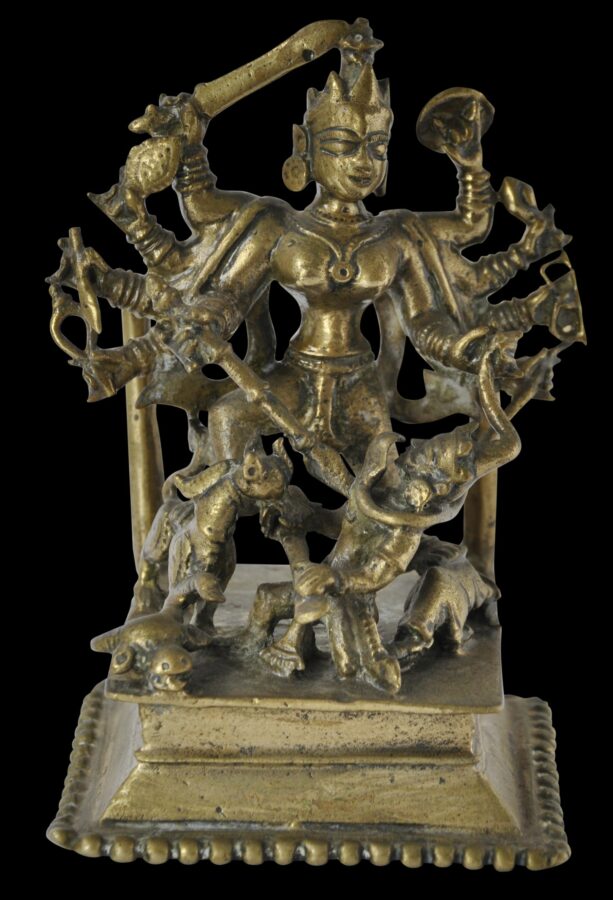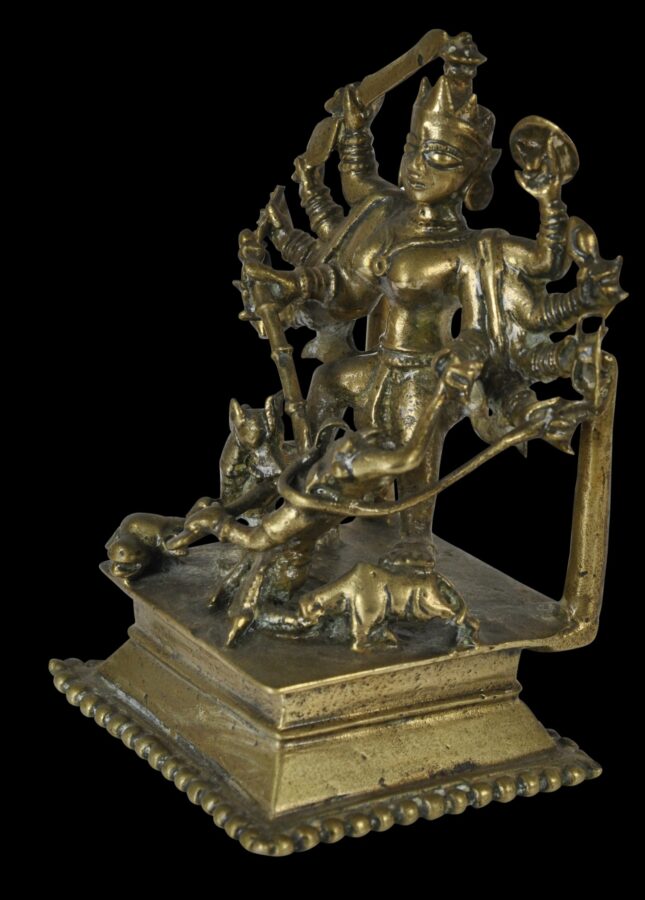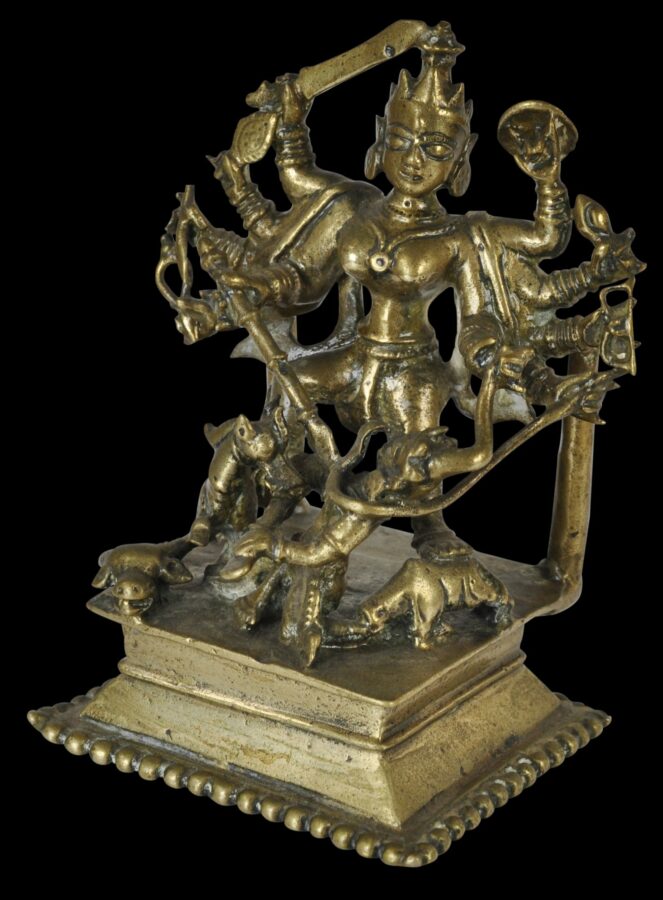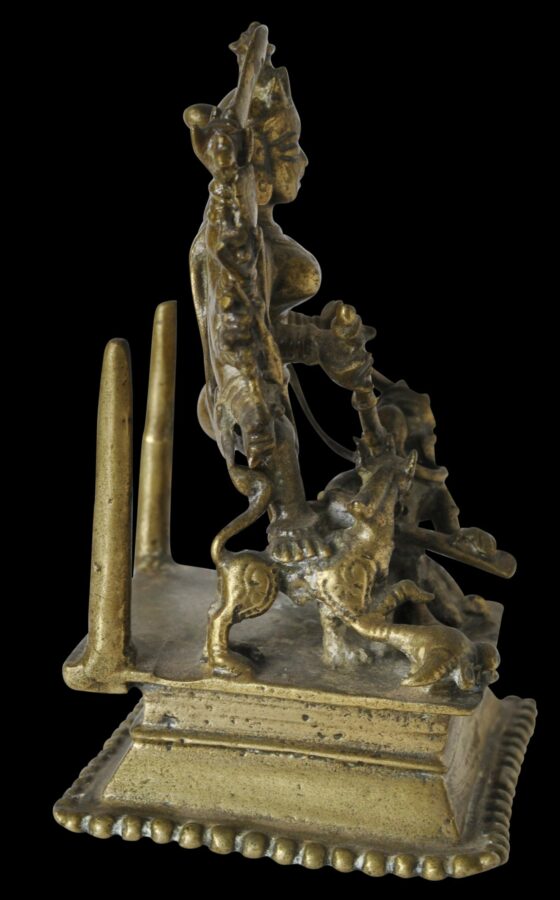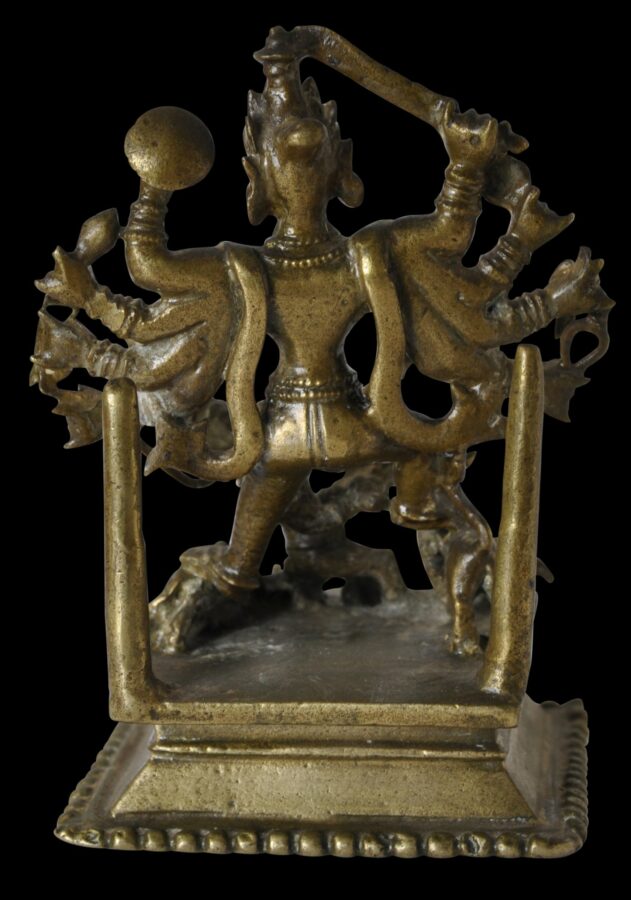This dynamic rendering of an ten-armed Durga shows the goddess slaying the buffalo-demon Mahishasura.
The moment just after decapitation is captured in this image. Durga’s left foot is on the buffalo demon’s back. A sword is in one arm and another has pulled the demon by its hair from the severed neck of the buffalo. Durga holds attributes in her other hands. These include a sword, a bow, a noose and a conch shell. A thin snake writhes from around Durga and over Mahishasura.
The head of the buffalo rests to Durga’s right.
Durga’s lion mount stands on her right. Its mouth is wide open and has grasped Mahishasura’s right hand.
Durga wears a pointy headdress which is typical of Orissa depictions from the period.
The group stands on a stepped, rectangular platform with a pearled lower edge.
A related example attributed to 14th-15th century Orissa is illustrated in Aryan (2005, p. 101).
Goddess worship harks back to the earliest era of Hinduism, and Durga, is a manifestation of Devi, the great goddess, though the popularity of goddess worship declined in many areas from around the 17th century onwards when it was supplanted by Vaishnavism with is increasingly popular male deities of Rama and especially Krishna.
The image has much wear associated with ritual puja use.
References
Aryan, S., Unknown Masterpieces of Indian Folk and Tribal Art, KC Aryan’s Home of Folk Art, 2005.
Mitchell, A.G., Hindu Gods and Goddesses, UBSPD, 1982.


